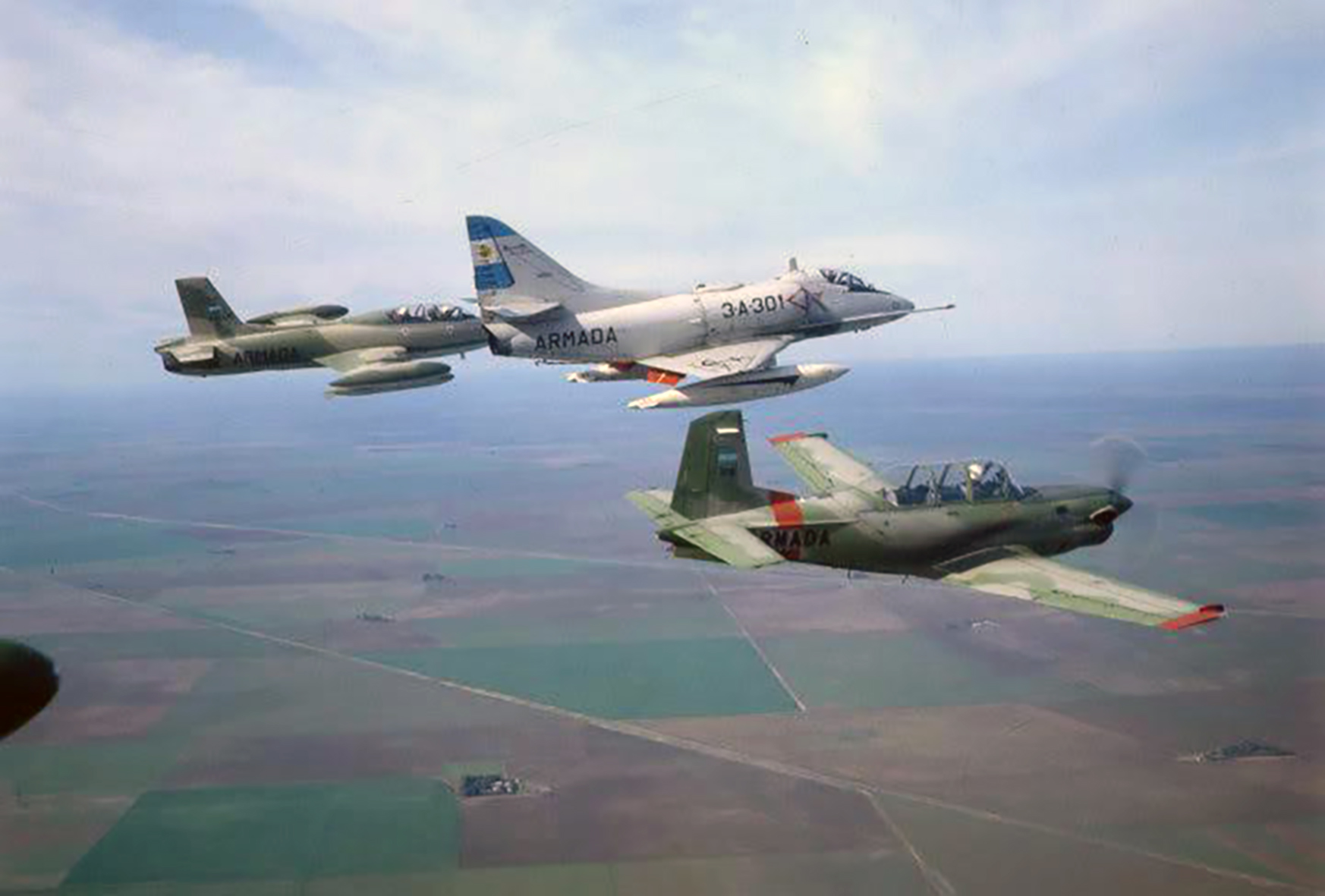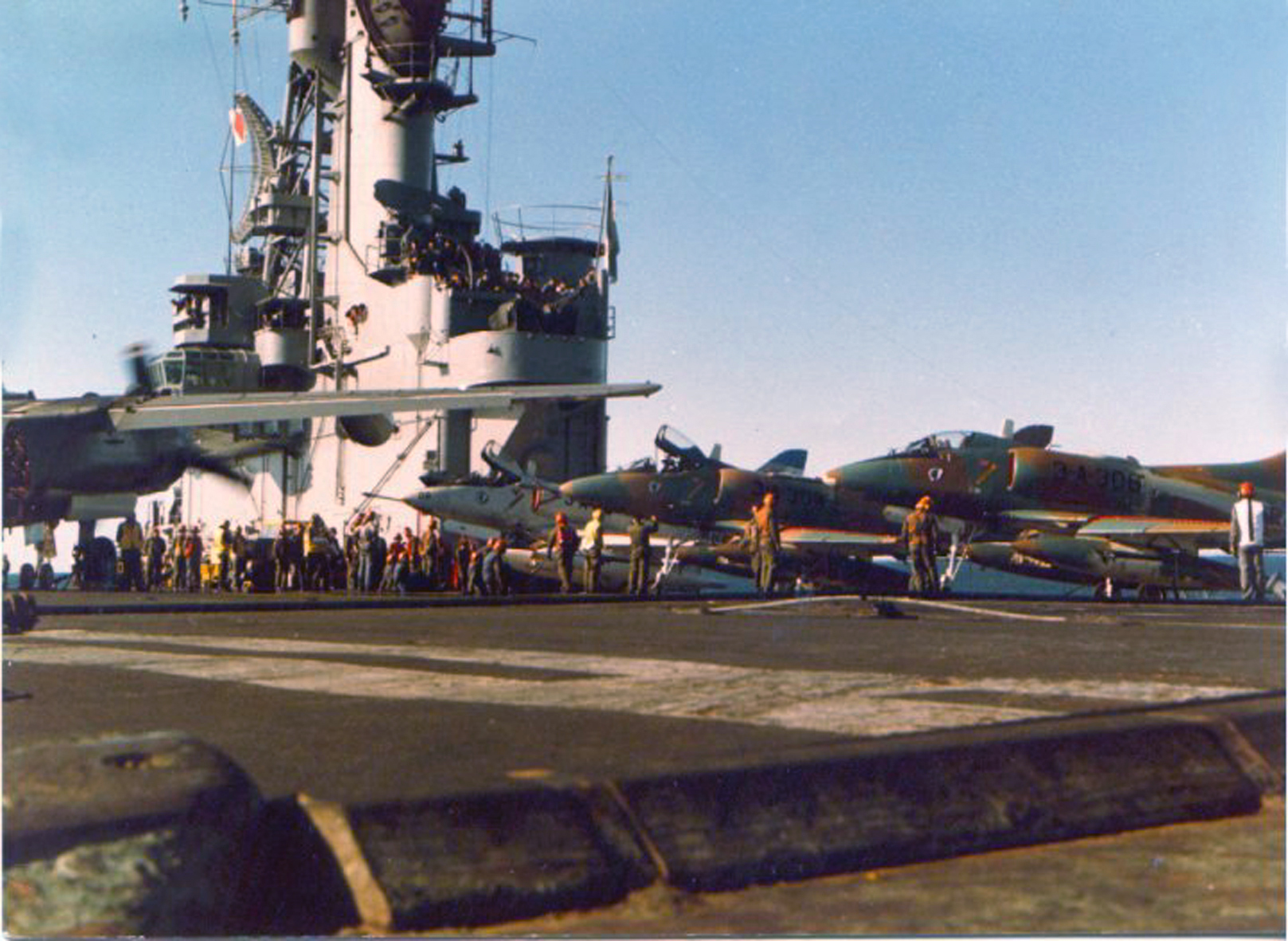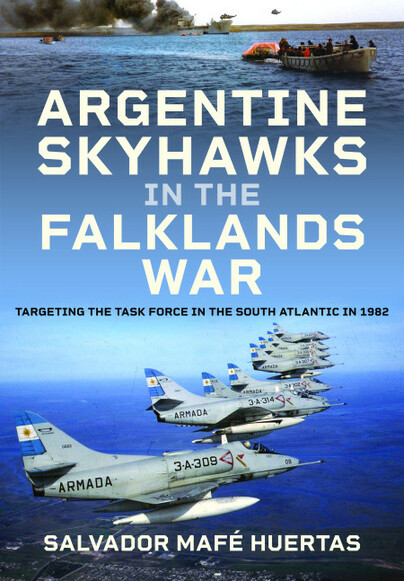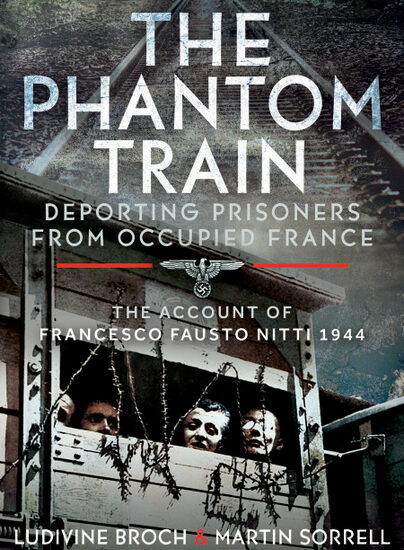Top cover for the Amphibious landings
Author guest post from Salvador Mafé Huertas.
Due to the increased tension of the diplomatic conflict over the South Georgia, on March 23, 1982 the Argentine Government met with the General Staff of the Command in Chief of the Navy to activate the plan carried out at the beginning of the year, now called Operation Blue (it was renamed Operation Rosario hours before landing). Three days later the order was given to carry out the operation on April 1, with an alternative for the 2 or 3 of the same month and with time to stop it until 6:00 p.m. on March 31.
On March 28, the Fleet left the Puerto Belgrano Naval Base, with a landing force to occupy the Falkland Islands and the following day four Grumman S-2E Tracker (2-AS-22, 23, 25 and 26) of the Anti-submarine Naval Squadron and three A-4Q Skyhawk (3-A-301, 305 and 314) landed on the ARA aircraft carrier 25 de Mayo, en route to the South. The Sea King 2-H-234 and Alouette III 3-H-105, 111 and 112 also arrived. In the days leading up to the landing, the Trackers made seven surveillance flights near the islands, finding no British ships, only they found around 40 Polish and Russian fishing vessels.

Due to a major storm on the night of March 31 to April 1, the operation was delayed until April 2.
The Argentine forces were organized into Amphibious Task Force 40 (FT40) commanded by Rear Admiral Gualter Allara, Coverage Task Force 20 (FT20) commanded by Captain José Sarcona and Aeronaval Task Force 80 (FT80) under the command of Rear Admiral Carlos García Boll.
The FT20 included the ARA (Armada República Argentina) 25 de Mayo aircraft carrier with its Embarked Air Group, the ARA destroyers Comodoro Py, Bouchard and Piedra Buena and the ARA tanker Punta Médanos.

The FT80 was organized as follows:
GT80.1 Insular.
80.1.1 1st Naval Attack Squadron.
80.1.2 Naval Aviation School.
80.1.3 Aeronaval Reconnaissance Squadron.
80.1.4 General Purpose Naval Air Squadron.
80.1.5 Air Service of the Argentine Naval Prefecture.
GT80 Surveillance. 2.
80.2.1 Naval Exploration Squadron.
80.2.2 Anti-submarine Naval Air Squadron.
GT80.3 Attack.
80.3.1 2nd Naval Fighter and Attack Squadron.
80.3.2 3rd Attack Naval Squadron.
80.3.3 1st Aeronaval Helicopter Squadron.
GT80.4 Mobile logistics support.
80.4.1 1st Aeronaval Squadron of Mobile Logistics Support.
80.4.2 2nd Aeronaval Squadron of Mobile Logistics Support.

Naval Aviation would be organized with the Embarked Air Group, a Coastal Air Group with the Exploration Task Unit with two SP-2H Neptune, one Beechraft B-200 and two Lockheed Electra. Also this group would have the Attack Task Unit, with three A-4Q, seven Aermacchi MB-326 and six to eight MB-339, a squadron of FAA Mirage IIIEA and one of IAI M5 Dagger, but only one squadron of Mirage IIIEA was deployed. The Medical Services Task Unit was also organized, with two Electra and three Fokker F-28s.
Finally, the attack aviation should not have been used during the landing and, after that, the A-4Qs loaded on the aircraft carrier returned to their base on April 6 and the squadron began to carry out the necessary training to achieve the greatest effectiveness and professionalism of its operations. Five A-4Q pilots who were stationed outside the unit were incorporated, as well as five more aircraft, totaling the maximum possible at the time, of eight aircraft. In-flight refueling practices were conducted with an FAA KC-130H, alongside the Super Etendard. With the help of the S-2 Tracker as scouts/pathfinders, attacks on surface units were simulated, such as type 42 destroyers (ARA Hercules and Santísima Trinidad) that were similar to the Royal Navy ones. During these tests they concluded that they should approach a height of less than 500 feet within 100 nautical miles, less than 100 feet within 50 nautical miles and finally less than 50 feet when within 30 nautical miles of the ship. , to avoid radar detection. Once in visual range, they had to carry out maneuvers to avoid cannon fire and pass over the ship with a separation greater than 20 seconds, to avoid being affected by the explosions of the bombs of the previous planes. At that time the 3-A-301 and 306 jets received Omega VLF equipment, while in two others sonobuoy receivers were tested, to experience the guiding of squadrons by means of sonobuoys launched by the Trackers, using them as a VOR.


After disembarking, the ships were organized into Task Force 79, with Task Group 79.1 formed by the aircraft carrier and 79.2 by their escort, with the destroyers ARA Hercules, Santísima Trinidad, Seguí and
Comodoro Pyand the ARA tanker Punta Médanos. The rest of the warships formed Task Groups 79.3 and 79.4 that operated separately.
Between the day they embarked and until April 27, surveys were carried out in the northern part of the Falklands. The following day, the FT.79 was ordered to remain a diversified potential threat, to operate on an opportune basis, so on the 29th the FT.79 commander ordered the Task Groups to locate near the Zone of Total Exclusion set by the British.
On April 30, information was received on the proximity of the British task force, so it was ordered to locate to the north-west of the Falklands.
At 15:13 on May 1, Tracker 2-AS-23 obtained contact with seven targets that it considered to be the British fleet in position 49º34 ‘S / 57º10’ W. Minutes later, at 15:30 echoes were detected of aircraft on radar and the interceptor section was launched, which found the FAA Canberras returning from their attempt to attack the British fleet.

Faced with this reality, it was decided to carry out an attack on the British fleet with the Skyhawks. Naval Aviation concluded that, according to the probability tables and considering the British anti-aircraft defense, of the six planes that took off (carrying twenty-four bombs), only four were able to launch (sixteen bombs) and returned to the aircraft carrier two aircraft. Of the sixteen bombs dropped, there was a 25% probability of impact, which was enough to neutralize a ship. At 05:28, another Tracker came out to determine the position of the fleet before an attack with the Skyhawks was launched, although it had problems with the radar. After seeing the Russian fishing boats move away, they detected a very powerful radar emission among them. Although they flew over the formation, they could not see the ship that was emitting, although it was evident that there was a ship nearby acting as a radar picket. Then they flew a little further east, failing to detect the English ships.
The planes were prepared and the pilots Lt Cdr Philippi, Lts Márquez, Olmedo, Arca and Lecour and Ensign Medici were on guard duty.
The distance between the two fleets at the time was more than 200 miles, above the range of the Skyhawk with the armament they carried, which was 150 miles. Although the aircraft carrier began to approach, there was no time to position itself before sunset, which was at 18:00, since the A-4Qs did not operate at night.
At 18:00 the FT.79 fell to the South, maintaining a zig-zag while waiting for a new exploration. At night Tracker 2-AS-26 was sent, which made contact with the enemy fleet at 23:00, now in position 50º00 ’S / 56º25’ W.
Meanwhile, the planes were being prepared with the new pilots on duty, leaving 3-A-301 with Cdr Castro Fox, 3-A-114 with Lt Márquez, 3-A-302 with Lt Benítez, 3 -A-306 with Lt Oliveira, 3-A-312 with Ly Lecour and 3-A-305 with Lt Sylvester. Another aircraft would remain in reserve and one as a refueling tanker, should the need arise.
The planes were scheduled to be launched at 06:00 hrs on May 2, although a new exploration could not find the enemy ships. Although the attack with the A-4Qs was intended to be the same, there were only 10 knots of wind and 40 knots of relative wind (wind plus ship speed) were needed to launch the aircraft with their load of fuel and bombs. This was unusual in the South Atlantic and ultimately prevented what would be the first aircraft carrier encounter since World War II. It is also necessary to add the precarious state of the aircraft carrier catapul, which forced there to be a lot of head wind, which also imposed constant change of course.

While the two interceptors were kept on 5-minute alert and the six planes to bomb 30 minutes from takeoff. At 9:00 a red alert was issued by unidentified aircraft and 3-A-304 was catapulted with LtCdr Philippi, although 3-A-307 with Ensign Medici was unable to do so due to failures. At 11:00 there was another alarm and 3-A-307 came out, repaired, with Lt Márquez and 3-A-304 with LtCdr Castro Fox. However, it was estimated that the alarms were Air Force planes that returned to the continent.
Due to the sinking of the ARA cruiser General Belgrano (C-4) and the failure to detect British ships, the attack was suspended. On the morning of May 3, the two interceptors were kept on 5-minute alert (3-A-304 and 307) with the pilots in one-and-a-half-hour shifts and the six surface attack aircraft (3-A- 301, 302, 305, 306, 312 and 314) with the pilots on duty for three hours.
At 13:30 the order to withdraw the aircraft carrier arrived, since it was supposed to be attacked at any time by the submarine HMS Spartan. However, according to Admiral Woodward, the English nuclear submarine at that time was unable to locate the ARA May 25. Subsequently, Task Group 79.1 remained near the coast, waiting for a favorable opportunity to act against the enemy. After the withdrawal, only two interceptor sections remained, with aircraft 3-A-304, 307, 312 and 314, leaving the other four configured for attack. In the afternoon there was a new alarm and 3-A-304 with LtCdr Philippi and 3-A-307 with Ensign Medici were launched, although they were again Air Force planes. On the last shift of the day, aircraft 3-A-304 (LtCdr Zubizarreta), 3-A-307 (Lt Olmedo) and 3-A-314 (Lt Lecour) were catapulted, with the same result. During the following days, a single section of interceptors was kept on alert, as the ship moved away from the combat zone.

On May 9, the Skyhawks were landed in Puerto Belgrano and on May 12 they were sent to the Rear Admiral Quijada Aeronaval Base in Río Grande to operate from there. However, four aircraft returned to Espora due to problems and two flew the following day, completing the crew on May 14.
From the following day, six aircraft were maintained in attack configuration with four 250kg Mk.82 Snakeye bombs, plus one reserve and another tanker. Two divisions were organized with the following pilots: First Division: LtCdr Castro Fox, Ensign Medici, Lt Benitez, LtCdr Zubizarreta, Lts Olmedo and Oliveira. Second Division: LtCdr Philippi, Lts Márquez, Arca, Rotolo, Lecour and Sylvester.
On May 18, due to an accident, the 3-A-302 Buddy Pack broke down, leaving the unit unable to refuel in flight, for which it was necessary to rely exclusively on the KC-130H of the Air Force. The plane could be repaired two days later, although the Buddy Pack would not be finally used in combat operations.
The following day, to evaluate the possibility of operating in conjunction with the Super Etendard, a flight was made between two A-4Qs with LtCdr Philippi and Ensign Medici and a Super Etendard, with LtCdr Curilovic.

Order your copy here.

